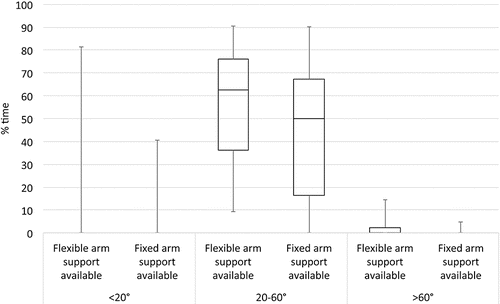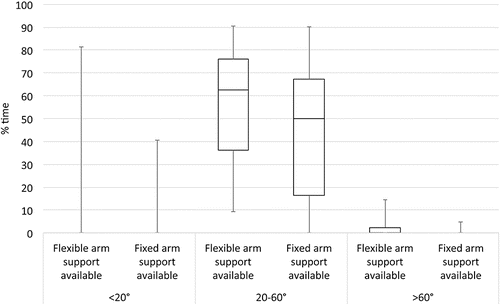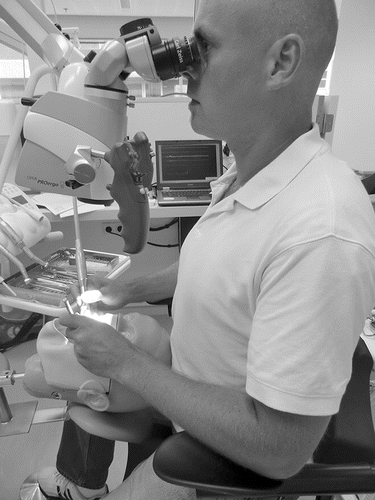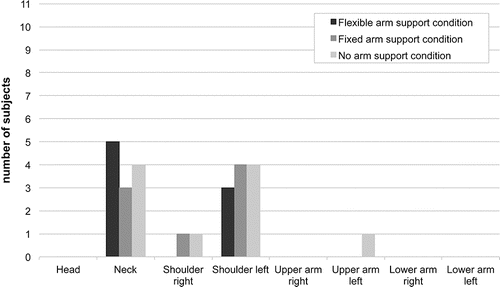Figures & data
FIGURE 2 (A) The dentist stool that was used in the present study. (B) The fixed arm supports on another dentist stool (only the arm supports were used on the dentist stool shown in part A). (C) The flexible arm supports that were also fixed to the dentist stool shown in part A.

FIGURE 3 Distributions of the absolute amplitudes of EMG of the middle trapezius muscle (left and right side) for the P10, P50, and P90 of the APDF.

TABLE 1 Results of the effect of arm support conditions on the P10, P50, and P90 of the log-transformed muscle activity of eight muscles.
FIGURE 4 Distributions of the percentages of time for upper arm angle when using the two arm support conditions (flexible arm supports, fixed arm supports), when participants were using arm support.

FIGURE 5 Distributions of the percentages of time for upper arm angle in each of the three arm support conditions (flexible arm supports, fixed arm supports, no arm supports), when participants were not using arm support.




